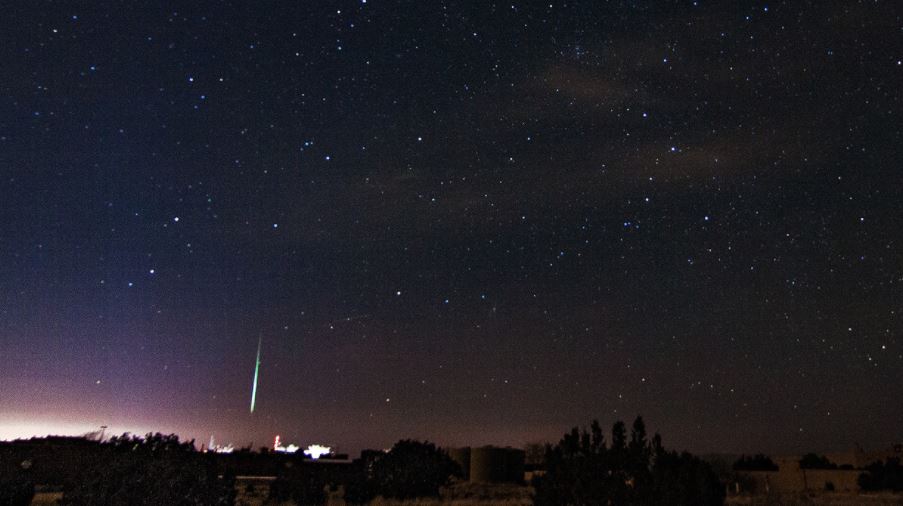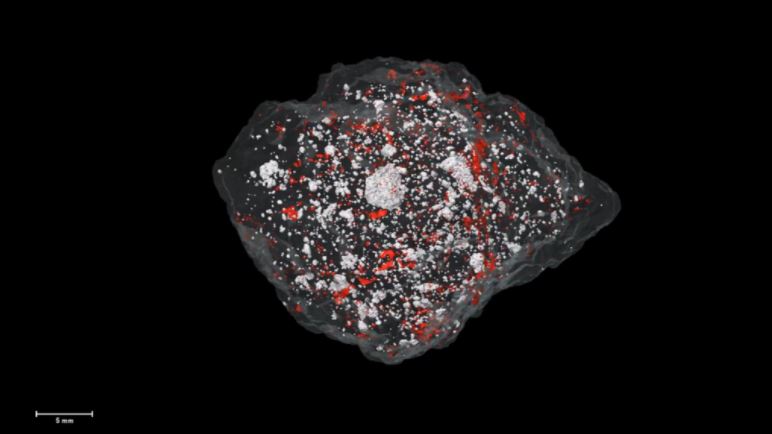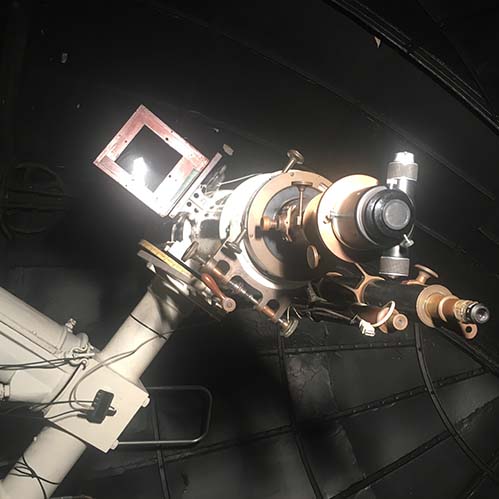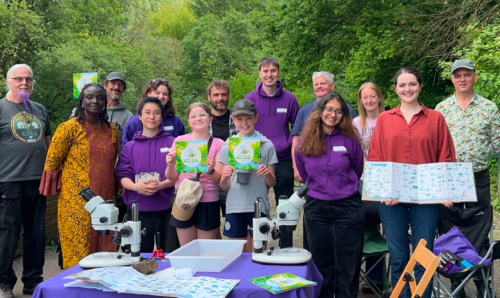Great balls of fire
Departments UOM life 24th August 2018
Goodness gracious – two great balls of fire have been spotted in the skies over Manchester. But there’s no need to run for higher ground quite yet – while fireball events aren’t always caught on camera, they are fairly common.
In the last month alone, a brand new meteor camera located here on The University of Manchester’s north campus has recorded two fireballs. The new meteor observation all sky view camera forms part of the System for Capture of Asteroid and Meteorite Paths (SCAMP), and captures a 360-degree view of the skies over the city.
The project is being overseen by Drs Andrew Smedley (School of Mathematics) and Katherine Joy (School of Earth and Environmental Science – SEES), in collaboration with the camera’s owner – Dr Ashley King (Natural History Museum, London). The camera captures a view of the night sky every 1.25 seconds – because when you’re looking for astronomical events, a lot can change from millisecond to millisecond.
We have a hit!

Within just weeks of installation, the SEES Isotope Group got a hit. In mid-July, a fireball event was captured by the camera – and the fact it was also picked up in other parts of the UK confirmed the sighting.
Just a week later, another fireball event was recorded. Working with other teams across the UK, the group will now calculate whether a meteorite was delivered to Earth, and where it landed.
You may wonder what’s so exciting about finding a new lump of space rock. But studying new meteorites can offer an unparalleled insight into the history and evolution of the Solar System – as a team from SEES recently discovered.
Holy carbonaceous chondrites, Batman!

Dr Romain Tartèse recently led a team of researchers in examining the organic matter found within carbonaceous chondrites – meteorites that have come from asteroids as old as the Solar System itself. They are made up of the solid matter that existed at the birth of the Solar System, including rock, dust, water ice and organics.
“Chondrites are a snapshot of the early Solar System, providing key insights on how protoplanets and planets formed and were processed,” explains Dr Tartèse. Because Earth is a dynamic planet – meaning that it is constantly changing thanks to processes like erosion and plate tectonics – meteorites can actually provide a clearer understanding of how the Earth evolved.
Dr Tartèse’s research is just part of the on-going work of the SEE Isotope Group. Elsewhere, the group has been working with the Henry Moseley X-ray Imaging Facility to produce CT scans of meteorites. This helps the scientists to understand the mineral makeup and internal structure of the rocks. The Group hopes the new all skies meteor camera will now assist them in identifying fireball events that result in new meteorites being found in the UK.
Manchester’s eye on the sky

The new camera is not the only thing keeping a keen eye on the sky. Also on North Campus, tucked away at the very top of Sackville Street Building, a team of astronomers have had their gaze fixed on the heavens for more than a century.
Underneath the rotating paper dome of the Godlee Observatory, two telescopes have allowed the Manchester Astronomical Society to make important observations since 1902. Through these telescopes, you can see all the way to Pluto.
But meteoritics isn’t all about sitting around looking through telescopes or examining film footage. Later in the year, two teams from SEES and the School of Maths will be heading to Antarctica to search and recover meteorites in the south polar mountains. And while the reason for the SEES researchers attending is obvious, you may wonder why Antarctica is of interest to our mathematicians.
The team are hoping to prove correct their hypothesis that there is a layer of meteorites hidden below the icy surface of Antarctica. Applied mathematics has been used to develop a model that suggests iron-rich meteorites remain hidden beneath the ice because they melt faster than the rate of the ice moving upwards. The trip will prove whether their equations work off the page as well as on.
You can keep up with the latest from the trip here.
Words – Hayley Cox
Images –
The University of Manchester
Hayley Cox
astronomyEarth and Environmental Sciencesearth scienceMathematicsmeteoriteSpace





Bob Dickson says
” astrological events” ummm what?
Anthony Holloway says
Hi,
Interesting to read about the new camera but in the third paragraph you have “looking for astrological events” which should be “astronomical events”.
Cheers,
Ant.